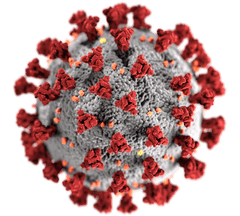
COVID-19: What are Coronavirus Symptoms?
Google “Coronavirus” today and you’ll see about 3,030,000,000 results. To many of us reading and watching the news, the world may seem chaotic and in complete disarray. This past weekend, 16 million people are now under an unprecedented lockdown in Northern Italy, world markets are plunging, and as of March 8th, the number of confirmed U.S. cases of coronavirus has risen to more than 550, including 22 deaths.
The anxiety surrounding this new strain of coronavirus is palpable and people are rightfully being extra-cautious. Having fear about this virus is understandable and to be expected. However, they say that the best remedy for fear is knowledge. So, in our commitment to empowering our community — we felt it was important to share our research on coronavirus with you.
What is COVID-19?
Coronavirus is a class of virus that affects the respiratory system. The coronavirus class contains about 7 different strains that can infect humans. The strain affecting us today is a newly identified 7th strain, officially known as: Severe Acute Respiratory Syndrome Coronavirus 2 (SARS-CoV-2), or COVID-19. At the end of 2019, this emerging strain was identified as the cause of a cluster of pneumonia cases in Wuhan, a city in the Hubei Province of China. It spread rapidly, resulting in an epidemic throughout China, with sporadic cases reported globally.
In February 2020, the World Health Organization named the disease COVID-19, an acronym meaning Coronavirus Disease 2019. The coronavirus is now recognized as the cause of the 2003 SARS outbreak. Additional specimens are being tested to learn more about this coronavirus, and its link with Severe Acute Respiratory Syndrome.
How does COVID-19 present clinically?
Frequently reported signs and symptoms of COVID-19 include fever (83–98%), cough (46%–82%), myalgia/fatigue (11–44%), and shortness of breath (31%). Sore throat has also been reported in some patients at the onset of the virus.
Less commonly reported symptoms include sputum production, headache, hemoptysis, and diarrhea. Some patients have experienced gastrointestinal symptoms such as diarrhea and nausea prior to developing fever and lower respiratory tract signs and symptoms. The fever progression among patients with COVID-19 is not fully understood; it may be prolonged and intermittent. Asymptomatic infection has been described in one child found with a confirmed COVID-19 diagnosis and identifiable chest computed tomography (CT) abnormalities.
If any of these symptoms arise in you or a loved one, it is crucial to get tested and diagnosed as soon as possible.
LabFinder is continuously in contact with the existing laboratories in our network. Get breaking updates on COVID-19 testing facilities by subscribing to our live update network
Schedule testing for additional harmful coronavirus strains here: Cold Flu Virus
Where is the best place to get more information?
WHO, CDC, NIOSH, NIH, and FDA websites are the most highly recommended sources for additional information on COVID-19.
Sources:
Center For Disease Control
Science Source
Bored Panda
DebGroup
UpToDate.com




Andy Alem
The LabFinder Editorial Team is behind The Illuminator and The Insider, LabFinder’s consumer and business blogs.
Dr.Robert Segal
Dr. Segal is CEO and co-founder of LabFinder, as well as a board-certified cardiologist. He began practicing medicine in 2002 and has founded several businesses, including Medical Offices of Manhattan and Manhattan Cardiology.